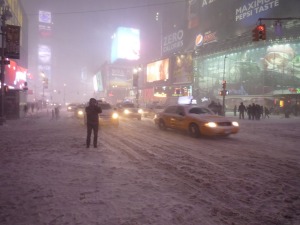When the weather gets colder, everybody goes indoors for warmth and shelter. This goes for people and pests. This is especially true for areas where the temperature is below freezing, but also in warmer climates with where temperatures dip and stormy weather comes.
It’s important to prepare your restaurant to prevent a pest infestation and save you money on energy bills. Pests will not only be looking for refuge and a warm place to sleep, they will also be looking for food. This makes restaurants a good target.
There are two main types of pests: insects that hibernate such as wasps, ladybugs and stink bugs and other pests that are active all year. This includes other kinds of insects such as ants and cockroaches that will come into your restaurant looking for food and shelter and rodents such as mice and rats. Insects can sneak in through cracked doors and crevices and can pose a health hazard by transmitting germs. They can also enter your restaurant hiding in shipments of food or other containers. Mice can enter your restaurant through a hole the size of a dime and rats can enter through a hole the size of a quarter. Rodents can spread diseases such as salmonellosis and hantavirus. They can also cause serious damage to your restaurant by gnawing on furniture or the wiring, which could cause an electrical fire.
While you may not see pests that hibernate during the winter, they will be out in full force when the weather gets warmer unless you do something to eradicate pests or keep them. This includes using traps and poison keeping them out. Restaurants are common places for pests to hide for shelter from the inclement weather and also to get at the vast supply of food. It is most important to prevent pests from entering your restaurant so you don’t have to deal with a costly infestation that could drive away customers or cause your restaurant to get closed down by the health department.
Many pests will enter your restaurant through the front door. You can shut off this entry point to them by installing an automatic door or a door closer. Heavy duty air curtains or door sweeps create a seal around the door to prevent insects or rodents from squeezing in. Utility penetrations, cracks in walls and vents are also common points of entry for pests. Vents on the roof and the side of the building are common entry points for pests. Inspect these vents to make sure they are covered and there are no openings larger than the diameter of a pencil. If there is a larger space or a hole larger than the size of a dime, repair it using stainless steel or copper mesh.
Pests don’t like being out in the open and are attracted to trees and bushes. They use the cover of this landscaping to enter your restaurant. By trimming back landscaping at least 2 feet from your walls will help prevent pests from using this as a point of entry. Adding a gravel track around the building will also discourage pests from attempting to enter.
Pests also can also be hiding in shipments delivered to your restaurant. Be sure to carefully inspect all deliveries. Plastic strips on loading docks and double door systems will also prevent pests from entering your restaurant via your loading dock or receiving area.
Prevention is the key to keeping your restaurant clean and healthy during the winter months and all year long, but it’s not always enough. Dropping of feces are a sign of infestation. Rat dropping are the size of a raisin, mouse droppings are the size of a grain of rice and insect droppings while smaller can still be visible. Gnaw marks of rodents is another sign of infestation. Rodents can gnaw their way through small openings. Greasy rub markings on the walls is also a sign of rodents as they travel close to walls where they feel safer. Exoskeletons of cockroaches and other insects that shed their skin is a sign of an insect infestation. Seeing live or dead pests also shows there is an infestation. Traps or poisons can help control or eliminate an infestation, but be careful not to contaminate food storage areas.

